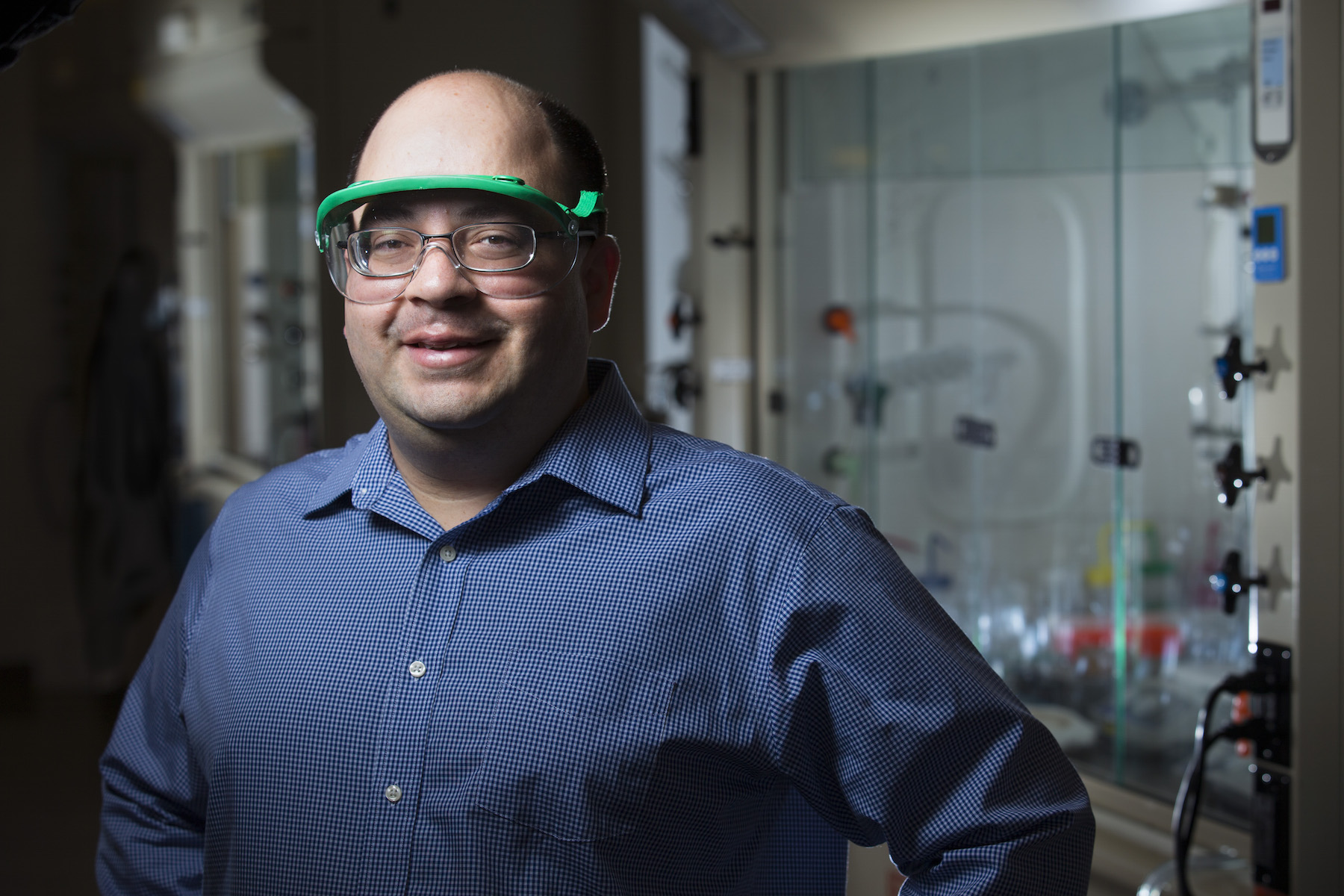
Lab-grown, nano-crystalline perovskites have received heavy attention from the scientific community in recent years because low-cost thin film processing and excellent electron transport properties make them attractive for use in photovoltaic cells and light-emitting devices (LEDs).
There’s been a number of hitches on the way to their use as a replacement for conventional silicon solar cells, though, and the very nature of organic thin-film processing is one of them.
Javier Vela, associate professor of chemistry, specializes in optical materials. His research group develops perovskite materials through soft chemistry— low-environmental impact processes that use room temperature and solution-phase reactions.
“The organic ligands used in making these materials have an insulating effect on the surface, which defeats the very purpose of a solar cell or LED, where you want electrons to be carried easily across the surface,” Vela said. “We wanted to find a way to avoid the formation of this barrier.”
Vela’s research group eliminated organic surfactants from the process, using antimony iodide instead.
“We call it doping, but it’s really more like a cap or coating,” Vela said. “The antimony creates a surface layer on the nanocrystal, but without all the long-chain organic ‘fuzz’ that reduced the charge transport properties of the organically processed films.”
The discovery was part of an ongoing research effort to optimize the fabrication of perovskite-based photoelectronic devices, to make them cost- and performance- competitive with conventional solar cells.
The research is further discussed in the paper, “Aliovalent Doping of Lead Halide Perovskites: Exploring the CH3NH3PbI3—(CH3NH3)3Sb2I9 Nanocrystalline Phase Space,” authored by Feng Zhu, Noreen E. Gentry, Long Men, Miles A. White, and Javier Vela; and published in a Special Issue of the Journal of Physical Chemistry C.